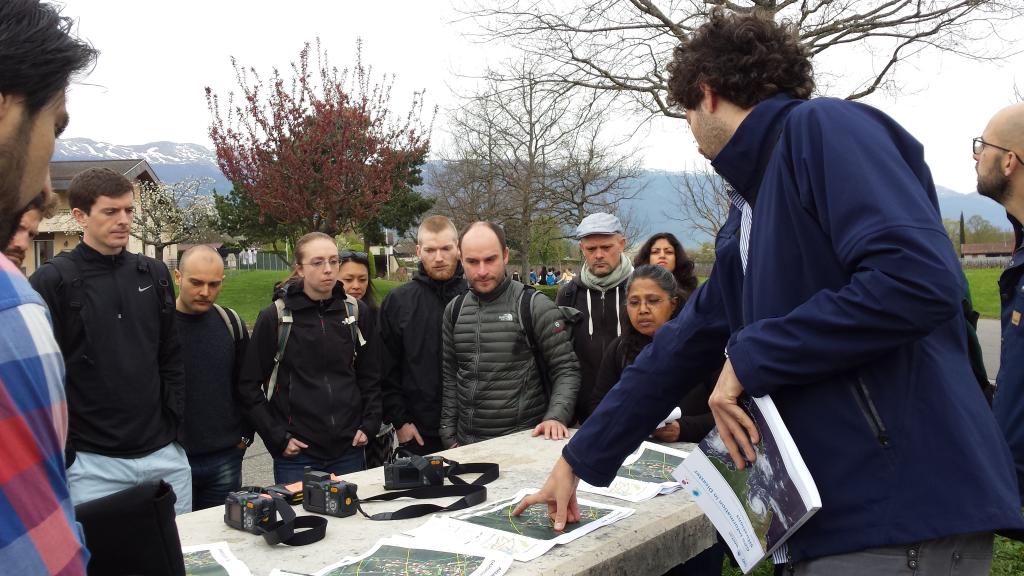The University of Copenhagen's Master in Disaster Management Confirms the Success of UNOSAT's GIS Course
October 2016, Geneva, Switzerland - The GIS course: “Geo-Information in Disaster Situations” delivered by UNOSAT is an elective of the Master of Disaster Management Programme of the University of Copenhagen. The course is designed to enable students to effectively utilize GIS tools and methodologies in support of emergency response operations. The partnership between the University of Copenhagen and UNOSAT which started in 2011 has delivered six successful editions of the GIS course benefiting over 100 Disaster Management professionals.
Target Audience
In the past, the course targeted disaster management professionals who met the admission criteria of the Master of Disaster Management Programme of the University of Copenhagen. However, in the recent years, we have opened the course to the public resulting in a blended class of university students and professionals working in the humanitarian field. The diversity of participating students from both the academic and professional spheres has facilitated extensive sharing of experiences in the applications of GIS tools in disasters among the practitioners.
A beneficiary of the course stated that:
"I am very impressed that at the end of the course I was able to grasp the full skill set of how to use GIS tools for map production."
Training Methodology
We use a successful formula combining formal training and experience based knowledge transfer directly from UNOSAT experts and analysts. Practical hands-on exercises form 60% of the training which exposes students to well formulated GIS laboratory simulation exercises that demonstrate the uses of GIS in emergency response operations. Students also get to use field data collection tools including Unmanned Aerial Vehicles (UAVs), Global Positioning System (GPS) receivers and smart phone applications (UN-ASIGN) for their field assignments. At the end of the field missions, the images are processed and the students are briefed on their findings using real-time results.

Students also get to learn directly from operational experts at UN OCHA on the value of satellite technology and GIS solutions applied to the decision making process of disaster management and emergency response. Throughout the course, students receive full support from UNOSAT experts who are always available to attend to the participant’s learning needs. An online community of practice provides a platform before, during and after the course for students to communicate amongst themselves and with UNOSAT experts for technical support in tackling their day-to-day challenges in the application of geospatial technologies to their work.
ECTS Credits and GIS License
At the end of the course, students gain the confidence to develop situation maps for damage assessment as part of their exams. They are therefore expected to perform an impact analysis and preliminary damage assessment in the immediate aftermath of a disaster and produce maps in support of an emergency response operation. The deliverables are then evaluated by an experienced team of GIS practitioners who provide expert advice on the end user needs and usability of the maps produced. The course gives right to 5 European Credit Transfer and Accumulation System (ECTS) credits for the Master in Disaster Management Programme. Students are also awarded a 1 year ArcGIS license from ESRI to support the application of the knowledge and skills gained from the course to their work.
Next Edition of the GIS Course
Registration is now open for the 7th edition of the GIS course to be held in Geneva from 6 to 24 March 2017. Being a highly competitive course, there are only a limited number of seats available for participation and therefore, interested Disaster Management professionals are highly encouraged to complete their registration to directly benefit from the practical experience of UNOSAT experts.

